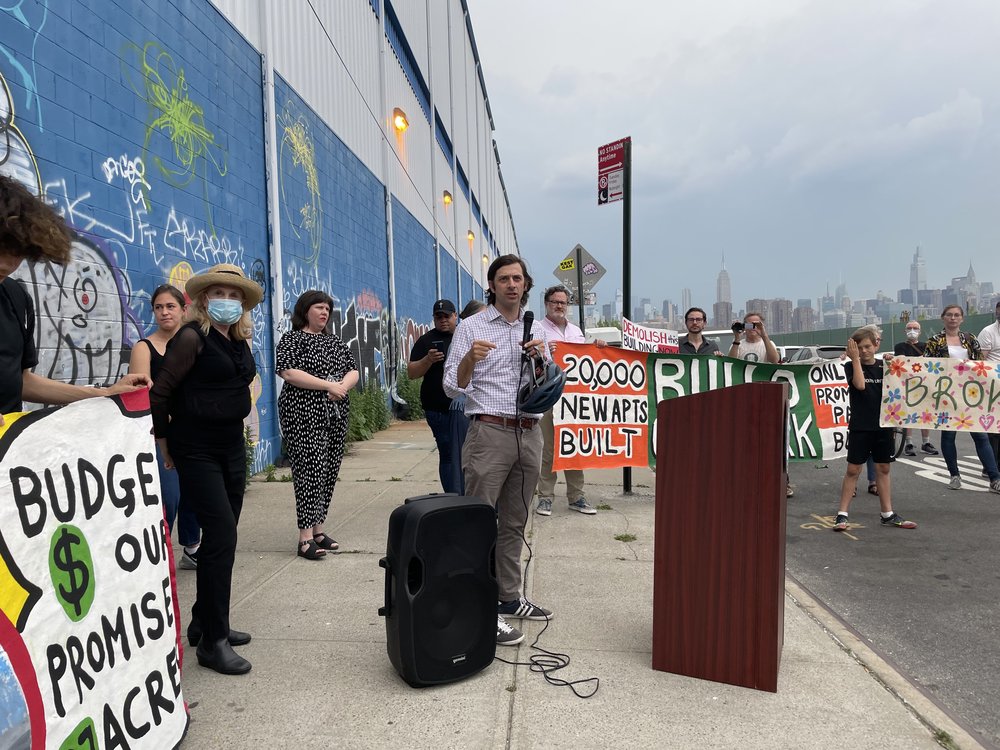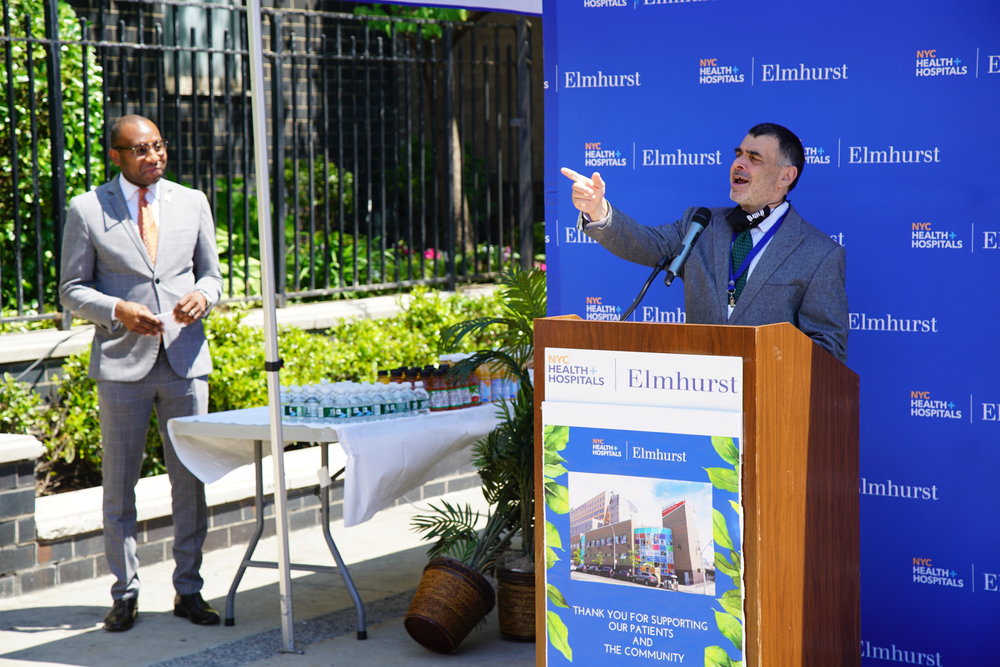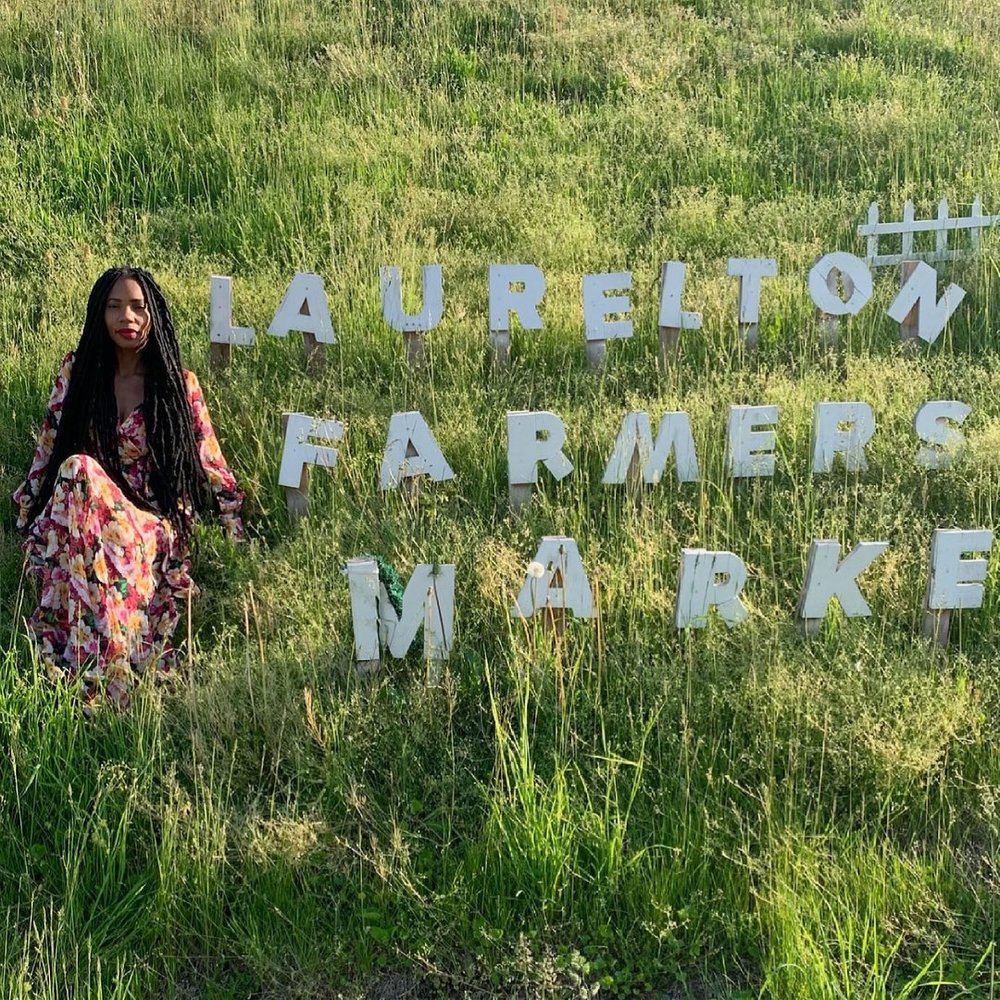Greener horizons at West Side Tennis Club
West Side Tennis Club members and guests were first to play on the newly resurfaced field of eight state-of-the-art grass courts at the iconic Forest Hills club last Friday.
“To have been able to take on a transformational upgrade of our grass courts at this moment in time is a testament to our Board of Governors, our members, and our commitment to our mission,” said club president Monika Jain.
Virginia Wade, who won the 1968 U.S. Open, was a guest of honor.
“I had deja vu watching all these good players out today,” she said. “I know what good grass is like. Grass technology is so sophisticated these days, and it’s so exciting that this club chose to take advice from Wimbledon.
“The WSTC lawns will become the envy of every tradition-loving club and player,” Wade added. “And for those lucky enough to play on them, it will be a blissful experience.”
“My favorite surface in the whole world is grass,” said Rennae Stubbs, a legendary Australian tennis player, coach, and Racquet Magazine podcast host. “It was the first time I ever played here, and it was great to be part of opening the courts for the first time this year. You just have to look around to know you’re in a historic tennis club.”
After WSTC relocated from the Bronx to Forest Hills in 1913, grass was laid for seven courts. The following August, a Davis Cup match would attract an audience of over 12,000, transforming tennis.
The hallowed grounds are where legends like Bill Tilden, Bobby Riggs, Ken Rosewall, Althea Gibson, Arthur Ashe, Billie Jean King, and Chris Evert made their mark on the tennis world.
However, the courts were considered past their prime with spongy and bent grass. After Newport’s International Hall of Fame resurrected its turf venue, WSTC leadership was inspired to examine the feasibility of upgrading its grass courts.
The $650,000 project was designed by Tom Irwin Advisors and spearheaded by Ian Lacy, the former head of Great Britain’s Institute of Groundsmanship Professional Services.
Test pits were dug to evaluate layers of soil, and Lacy and his colleagues recommended a plan to replace the grass, upgrade the irrigation system, enhance the underlying dirt by adding a sand mixture for playability and durability, and regrade the courts.
The grass is a modern blend of three varieties of rye, the same kind used at Wimbledon, the Newport Hall of Fame, and London’s Queens Club.
“The new grass courts are much better, since the ball bounces higher and we can rally and really enjoy it,” said longtime club member Juan Reyes. “Before the ball would hardly bounce.”
The upgrades included Wimbledon-style wooden tennis posts with brass winder mechanisms and “West Side Tennis Club” etchings.
“This is one of the most revered sites, as it was the first home of the U.S. Open,” said Frank Milillo, a pickleball ambassador. “The courts have always been top notch, and it’s exciting to see how well the club improved it with a new lawn. This is where the sport grew, and now it’s coming back to its roots.”
Activists, pols rally for Bushwick Inlet Park
Local activists, politicians, and community members gathered along the Williamsburg-Greenpoint waterfront last week to advocate for the complete construction of the long-promised Bushwick Inlet Park.
The event was organized by the Friends of Bushwick Inlet Park, a community group that has been fighting for the project for nearly two decades.
In 2005, large portions of Williamsburg and Greenpoint were rezoned under Mayor Michael Bloomberg. In addition to new development, elected officials promised an expansive, miles-long park along the area’s formerly industrial coastline.
Although North Brooklyn has since experienced a boom in new development, the promised park remains elusive 16 years down the line.
“The population growth along the North Brooklyn waterfront initiated by the 2005 rezoning has exceeded the city’s estimates by historic proportions,” said Steve Chesler, an organizer with the Friends of Bushwick Inlet Park. “Yet, the creation of Bushwick Inlet Park promised to help mitigate this new neighborhood density is happening at a snail’s pace.
“After 16 years and counting, only 8 acres out of 27 are built or in progress,” he added. “For our health and well being, the city must speed up its execution and funding for completion of this public green space and fulfill its commitment to its residents.”
“Sixteen years into the redevelopment of the neighborhood and we have 20 percent of the park we were promised,” said Ward Dennis, another Friends of Bushwick Inlet Park organizer. “We hope to at least make some progress and get rid of this building.”
The building in question is a large, storage warehouse along the waterfront. In 2016, Mayor Bill de Blasio and the city bought the site for $160 million, rekindling hope that the full Bushwick Inlet Park would become a reality.
However, there are currently no plans in place to demolish the structure.
“We are here to celebrate the capital investment of Mayor de Blasio,” said Catherine Thompson. “We are grateful because he secured the future of Bushwick Inlet Park. Now Mr. Mayor, tear down this building!”
Thursday’s rally was attended by multiple local officials and members of the Triboro United Youth Soccer Club.
“I would like to thank Mayor de Blasio for picking up the broken pieces left by the Bloomberg administration and the mostly disastrous 2005 rezoning,” said Assemblywoman Emily Gallagher. “Mayor de Blasio, we are almost there and your term is almost up. Let this be a part of your legacy.”
Counciman Stever Levin said he is currently working to include the park project in the soon-to-be-finalized city budget, with a special focus on demolishing the warehouse. The budget must be finalized ahead of the start of the new fiscal year on July 1.
“Justice delayed is justice deferred is justice denied,” said Levin. “That is what we are seeing right now. There is a generation of kids in North Brooklyn who need this space.”
Beauregard J. Robinson, Jr. MD
Beauregard J. Robinson, Jr. MD passed away on Monday, May 24, 2021 at the age of 75. Beloved Father of Beauregard (Suzanne) Robinson III, Leopold Robinson, Christopher Robinson, Lindsay Robinson, Mark Robinson and Michael Robinson. Loving Grandfather of MacKenzie and Riley. Dear Brother of John Robinson, Beth Steinkelner and Robert Robinson. Also survived by many loving nieces, nephews and friends. Private Cremation held on Thursday, May 27, 2021 at All Souls Crematory, East Elmhurst, NY under the direction of Papavero Funeral Home, 72-27 Grand Avenue, Maspeth, NY 11378.
Richard C. Varnis
Richard C. Varnis passed away on Monday, May 24, 2021 at the age of 73. Beloved Father of Charles, Craig and Kevin. Cherished Grandfather of Andrew, Kyle and Justin. Loving Brother of Michael and Charlene. Funeral Services held at Papavero Funeral Home on Friday, May 28, 2021 at 11 AM. Interment followed at Lutheran All-Faiths Cemetery, Middle Village, NY under the direction of Papavero Funeral Home, 72-27 Grand Avenue, Maspeth, NY 11378.
Carmela Trifilio
Carmela Trifilio passed away on Tuesday, May 25, 2021 at the age of 84. Beloved Wife of the late Ippolito Trifilio. Loving Mother of Anthony Trifilio, Steven Trifilio, Frank Trifilio, Maria Mirra and the late Josephine Como and Mother-in-Law of Enza, Michelle, Gianni and Antonio. Cherish Grandmother of Josephine (Dominic), Melissa (Paul), Christina, Carmela, Marygrace, Nicole, Sabrina, Annamarie (Pietro), Steven, Gianni, Luca and Lia Grace and Great-Grandmother of Giuliana, Giancarlo, Olivia and Emma. Dear Sister of Rosa Aloe, Antonette Trimarche, Francesca Morretta, Rocco Ruggiero, Salvatore Ruggiero and the late Vincenza Molinaro and Maria Spatola. Also survived by many loving nieces, nephews, great-nieces and great-nephews. In Lieu of Flowers, memorial donations may be made to: St. Jude’s Children’s Research Hospital. Mass of Christian Burial offered at St. Athanasius Church on Saturday, May 29, 2021 9:45 AM. Private Cremation followed at Green-wood Cemetery-Crematory, Brooklyn, NY under the direction of Papavero Funeral Home, 72-27 Grand Avenue, Maspeth, NY 11378.
Maspeth remembers the nation’s veterans
Despite the rainy weather, dozens of veterans, community members and elected officials gathered on Saturday to honor those who made the ultimate sacrifice for freedom.
The annual Memorial Day tradition, led by the United Veterans & Fraternal Organizations of Maspeth, included wreath-laying ceremonies at the Vietnam Veterans Memorial in Elmhurst Park, the World War I Memorial at Garlinge Triangle, and the monument at Memorial Square, where 128 of Maspeth’s war dead are remembered.
“These brave souls deserve our gratitude,” said Ken Rudzewick, a veteran and longtime member of the organization who hosted the day’s events. “It’s because of them and the many Americans who went before them that we enjoy the great nation we live in today.”
Assemblyman Brian Barnwell acknowledged that his generation often forgets the sacrifices that were made by older veterans.
“That’s why it’s so important to do what we are doing today and share the memories of those who fought for our country,” Barnwell stressed.
Korean War veteran Constantino Carbone Jr., who helped lay the wreaths at each of the sites, noted that 36,752 American soldiers died in Korea.
“These kids gave their lives for freedom,” said Carbone, who served 15 months in combat and will be one of the grand marshals of next year’s Memorial Day Parade, which has been cancelled the last two years due to COVID. “But that’s what we were fighting for.”
Families of fallen soldiers lost in more recent wars also attended the services. Moura Hernandez and her son Juan came to Memorial Square to honor her brother Robert Rodriguez, who was only 21 when he was killed in Iraq in 2003.
Residents said the rain couldn’t dampen their commitment to pay their respects to those lives that were lost.
“They fought in the rain so we can come out in the rain to remember them.” said Marianne Kiskorne, who held a sign adorned with hearts and the words “Thank You.”
Two wreaths were later placed at the American Legion monument and the Civil War Memorial in Mount Olivet Cemetery.
Maryanna Zero, president of the United Veterans & Fraternal Organizations of Maspeth, said she feared the day would be a wash but felt proud that so many from the community participated.
“Next year we’ll have our parade,” Zero told the crowd, “a parade that is going to be not just the best of this borough, but the best of all boroughs.”
Could you eat a $1000 worth of cookies?
Chip City has launched the Lucky Cups promotion, where you have a chance to win prizes including free cookies, catering of 50 cookies, coffee, and a grand prize of $1,000.
Starting June 1st, any beverage with any purchase at any of our store locations, excluding Chip City mobile, will come with a Lucky Cups sleeve. Each sleeve comes with two chances to win prizes from a free beverage to a $50 gift card. The famous cookie spot has a variety of flavors from S’mores, Blueberry Cheesecake, to their limited Everything Cookie inspired by the Everything bagel.
To see what they’re serving for the week, be sure to check out their Instagram @chipcitycookies or purchase their pocket keychain that has a QR code of their menu. Chip City has locations in Sunnyside, Long Island City, Astoria, West Village, Williamsburg, and Carroll Gardens. They also have their Chip City mobile that updates their location through their Instagram page @chipcitycookies.
Follow Chip City on Instagram to learn more.
Beep announces new Elmhurst Hospital funding
Borough President Donovan Richards last week announced two multi-million dollar allocations for new projects at Elmhurst Hospital. The event also served as a celebration of the borough’s healthcare workers who have spent over a year on the frontline fighting the pandemic.
“A year ago, Elmhurst Hospital was the epicenter of the epicenter of the world’s worst public health crisis in a century,” Richards said before a crowd of doctors, nurses, and other hospital staff. “The staff here at Elmhurst Hospital were working double and triple shifts to fight a virus we knew nothing about. They handled the unprecedented crisis with true grace and kindness.”
“The best thing you can do to support health and hospitals is to hire the best people and support the best people,” added Mitchell Katz, president and CEO of NYC Health + Hospitals
The funding will be used to build a new Pediatric Intensive Care Unit at Elmhurst Hospital. The facility will be the first of its kind in Queens and will serve children in need of immediate medical attention.
Additionally, the investment will support the conversion of two undersized operating rooms into full-service operating rooms.
“We have secured more than $5 million for projects at Elmhurst Hospital that will expand access to critical care for thousands of families,” Richards said.
He also stressed the need for a more centralized medical center for Queens.
“No family in Far Rockaway or Long Island City should have to travel more than 30 minutes by car or 90 minutes by public transportation to get the care that they need,” he said.
“Over the course of the last year we have been clapping for our healthcare heroes,” said Richards, “but one of the commitments I made when I was elected Borough President was that I would not simply clap for you but that we were gonna put our money where our mouth is.”
Richards also celebrated the over one-million people who have been vaccinated in Queens, a figure that leads all other counties in New York State.
Other elected officials, including State Senator Jessica Ramos, Councilman Fancisco Moya, and Assemblywoman Catalina Cruz also spoke at the event.
“I know that as the years continue and as you continue to be reelected, which I know we aren’t here to talk about but I just got to plug that in, I know that your commitment will always be with the people,” said Cruz, “the people that need it.”
Richards is facing a primary battle against Councilman Jimmy Van Bramer and former councilwoman Elizabeth Crowley next month. He took office last year after winning a special election to fill the seat.
Councilman Danny Dromm, who chairs the Finance Committee, stated his intention to direct more money to Elmhurst Hospital in the finalized $90 billion budget proposal.
“It doesn’t matter if your documented or undocumented, rich or poor, when you come to Elmhurst Hospital you get the service that you need,” he said.
Farmers market brings fresh food to Laurelton
For years, Dianna Rose walked by the parking lot of the LIRR station in Laurelton and wondered why there was never a farmers market in the space. In her mind’s eye, Rose saw beautiful white tents filled with vendors selling flowers, produce, and everything in between.
Last year, that vision became a reality when Rose launched the Laurelton Farmers Market, the first Black-run farmers market in Southeast Queens. Now in its second year, the market brings flowers, food, and community to the residential neighborhood.
“Our mission statement is to cultivate community and to be a place where community grows,” Rose explained in an interview this past week. “The Laurelton Farmers market was cultivated because of our community and the lack of access to farm fresh produce and homemade small batch products.
“I love a good farmers market, and I just didn’t understand why Laurleton didn’t have one,” she added.
Rose had the idea to call the railroad directly to see if they would support her dream. She was put in contact with various different departments before finally connecting with someone who supported the idea. The LIRR became an official partner to the project and continues to help it develop.
Simultaneously, Rose worked to pitch the idea to her community by posting about it in The BlaQue Resource Network Facebook Group.
“I said ‘hey, who would like to see a farmers market in Laurelton’ and the response was amazing,” said Rose. “We knew it was gonna be a success. The community had already seen the vision.”
Despite the widespread support, the Laurelton Farmers Market’s inaugural season was complicated by the COVID-19 pandemic.
“The biggest hurdle we had last year was getting farmers to come to the market,” Rose explained. “Many farmers were already booked at markets or didn’t have the capacity to support additional markets. This year we are proud to say we don’t have that issue.”
The market launched its second season on May 15 with a wide selection of produce, seafood, flowers, meat from an on-site butcher, and handicrafts from various artisans.
“Now people are coming and seeing what they expect,” said Rose. “It has been such a beautiful response and people keep coming back.”
The Laurelton Farmers Market has also found support from many of Queens’ elected officials. Rose thanked State Senator Leroy Comrie for being particularly supportive of the market and for helping to secure the LIRR partnership.
Borough President Donovan Richards and Queens District Attorney Melinda Katz are also both supporters and frequent visitors of the market as well.
Rose is confident that the market will help support the local community and business. She is particularly excited by the market’s partnership with Ernest Foods, the first Black-owned organic supermarket in Jamaica.
Ernest Foods is set to open its brick-and-mortar location this summer and has already begun selling produce at the Laurelton market.
Rose also has plans to open two new markets throughout Queens this summer. A market in St. Albans is set to open in June followed by a Queens Village market in July. The new locations will also be in the parking lots of LIRR stations thanks to the partnership.
After the success of the Laurelton Farmers Market, Rose is hopeful that more people will be inspired to take on similar endeavors.
“I’ve had maybe ten people call me since launching the farmers market last year, whether it’s a community group or an individual, who say that they always wanted to do a farmers market. People are unsure and don’t know where to start, so it helps to see that it’s been done before. It’s motivating.”
The Laurelton Farmers Market is open every Saturday and Sunday from 11 a.m. to 4 p.m. in the parking lot of the Laurelton LIRR station. Interested vendors can apply at laureltonfarmersmarket.com.
More information about the market is available on Instagram (@sovereignmarkets) and Facebook (@laureltonfarmersmarket).







